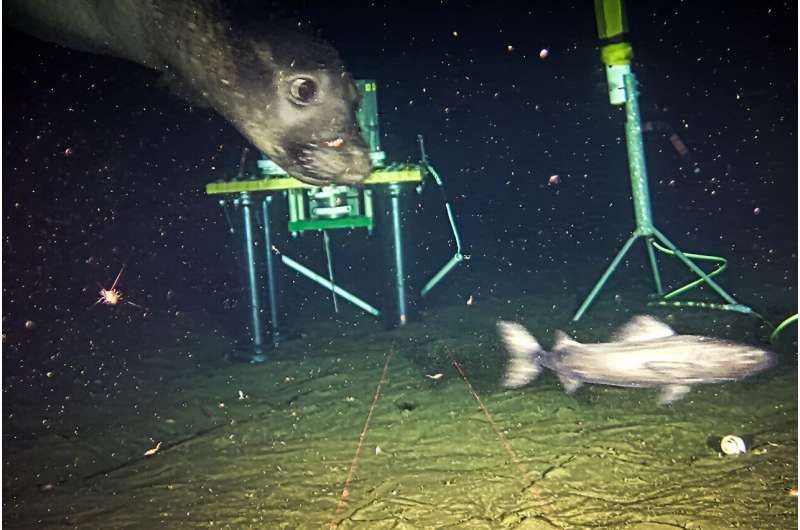
If you’re not susceptible to urban myths and misinformation, there’s a new study from the World Health Organization that will ease your 2010s-era anxieties about cell phones. There were a lot of other developments this week, including the return of Boeing’s trouble-plagued Starliner capsule to Earth with a surprising number of astronauts (<1) and a technique to make living tissue transparent. But I thought you might like to read about cute adolescent seals and a neuronal mechanism for emotional resilience.
High-frequency radio waves vindicated
In a major review of decades of research, the World Health Organization has convincingly refuted a concern I thought people had stopped worrying about 15 years ago: Exposure to radio frequencies used by wireless technologies including cell phones (or “mobiles,” as British people say) does not increase the probability of a brain cancer diagnosis.
Encompassing 63 studies, the review found the risk of brain cancer did not rise even among people who used cell phones for prolonged spans, defined in the review as 10 years or more. There were additionally no increased risks for leukemia or brain cancer in children. The researchers note that even though the use of mobile phones has skyrocketed, the risk for these cancers has not.
In the study, the authors write, “For near field RF-EMF exposure to the head from mobile phone use, there was moderate certainty evidence that it likely does not increase the risk of glioma, meningioma, acoustic neuroma, pituitary tumors, and salivary gland tumors in adults, or of pediatric brain tumors. For near field RF-EMF exposure to the head from cordless phone use, there was low-certainty evidence that it may not increase the risk of glioma, meningioma or acoustic neuroma.”
Seals cute
An international research collaborative studying the effects of light and bait on fish behavior in the deep Pacific ocean report that the acoustic imaging sonar observatory they deployed on the seabed became an accidental dinner bell for adolescent male northern elephant seals, who had learned to associate the sound of the sonar’s pings with the presence of food.
The scientists’ kit included a high-definition camera and LED area lights and resulted in a series of incredibly cute photobombs as the seals dove in to catch sablefish. They report sighting eight adolescent males over the study period, six recurrent visitors and two temporary foragers.
The scientists write, “We hypothesized that the ability of elephant seals to perform repeated visits to the same site over long periods (> 10 days) was due to the noise generated by the sonar, suggesting that they learned to use that anthropogenic source as an indicator of food location, also known as the ‘dinner bell’ effect. One interpretation is that elephant seals are attracted to the FAAE site due to the availability of prey and use the infrastructure as a foraging and resting site, but then take advantage of fish disturbance caused by the camera lights to improve foraging success.”
Mice resilient
Neuroscientists at the University of Lausanne have reported the underlying neural mechanisms of a phenomenon called “emotional contagion,” in which observing the emotional states of others impacts the observer. They designed a study involving mice to explore emotional resilience.
Observing others coping with a traumatic experience results in greater resilience and lower incidence of depression symptoms in observers. Their experiment placed observer mice near constituents who received small electric shocks to their paws. The observers were subsequently less likely to exhibit pathological symptoms of depression when they were also subjected to the same experience. By contrast, mice who did not witness these traumatic incidents were not similarly resilient.
Once they discovered this principle, the researchers developed imaging tools to track the neurochemical serotonin in the brains of the test mice. They were able to identify the release of serotonin in a specific brain region called the habenula, in the cerebrum. The habenula is involved with emotional and sensory processing and regulates serotonin.
Measurements during the experiments revealed that emotional contagion coincided with increased release of serotonin and a lasting change in neuronal functioning within the habenula. In further experimentation, they found that suppressing this increase in serotonin inhibited the neuronal changes that coincided with emotional contagion. They believe that the experiment suggests new paths for therapies, the development of new pharmaceuticals and tests for existing pharmacological serotonin activators.
© 2024 Science X Network
Citation:
Saturday Citations: Teen seals photobomb research site; cell phones are safe; serotonin and emotional resilience (2024, September 7)
retrieved 7 September 2024
from https://phys.org/news/2024-09-saturday-citations-teen-photobomb-site.html
This document is subject to copyright. Apart from any fair dealing for the purpose of private study or research, no
part may be reproduced without the written permission. The content is provided for information purposes only.
